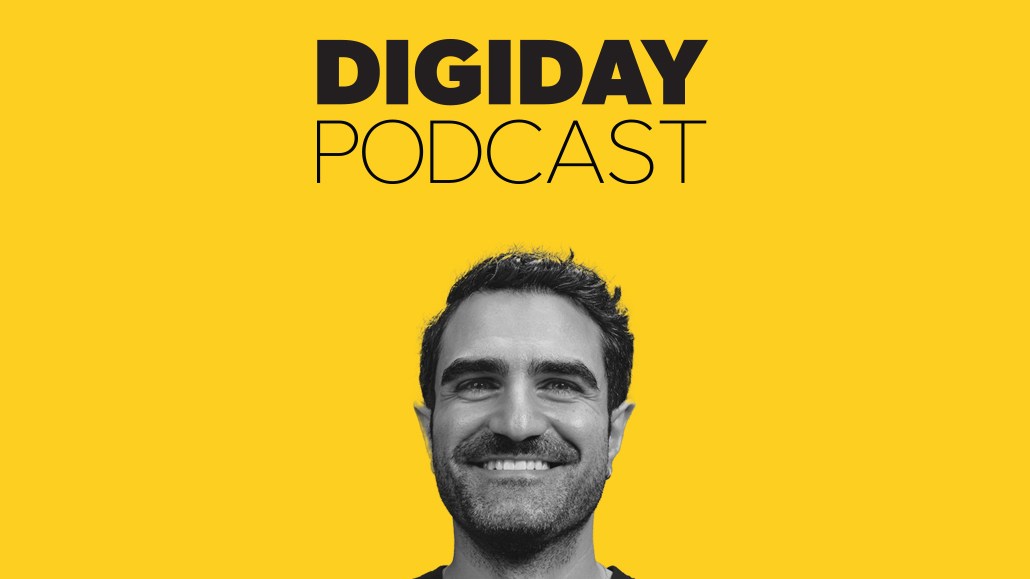How British GQ’s Adam Baidawi reimagined the legacy men’s luxury publication for a modern, global audience

Subscribe: Apple Podcasts • Spotify
Adam Baidawi stepped into the role of British GQ’s head of editorial content in November 2021 at a time when the legacy men’s fashion and lifestyle title was facing a crucial pivot point in its identity.
Not only was Condé Nast reimagining its editorial and business strategy to be internationally structured, but the very idea of men’s fashion and luxury was evolving from a singular ideal image to embracing individuality. Baidawi, who had been a lifelong fan of the title, was also serving as the deputy global editorial director of GQ, and helped lead the refresh of the brand, focusing first and foremost on new luxury and community.
On the latest episode of the Digiday Podcast, Baidawi shared how he applied the “new luxury” mentality to the publication’s social strategy, events business and video production, as well as how the shift to international operations strengthened the storytelling ability of GQ across the globe.
Below are highlights of conversation, which have been lightly edited and condensed for clarity.
The root of the international audience strategy
People don’t consume culture in neat geographical boundaries. Especially not now. Even if you go back to 15-year-old me paying a premium to buy an imported edition of British GQ, I did that because I wanted to portal into a different place… And really interestingly, before we even went through our global transformation, 40% of Condé Nast’s traffic was coming from outside the country in which the content was created and posted.
There was a 12-, or maybe 14-week window [before the international shift] in which three different editions of GQ published three different covers with Rami Malik… I’m talking three completely different shoot days, three completely different hours-long interviews, everything… None of us knew that the others were working on this Rami Malik story. What a colossal waste of time and money and creativity.
Social storytelling is critical
Now we have story editors per story, who, from the outset of their story, will partner with their peers on the design team, who also, in addition to designing the print magazine, do the motion Instagram story reveals for epic features and they work with the social team. The arc of a story going from the reporting stage to closing for print to launching on social, or sometimes skipping the print process altogether, is much more drawn out now. And much more thoughtful. A big part of that is trying to rework the way we communicate with each other as a team and the way we collaborate, and trying to do so without having too many meetings.
A story editor will now have responsibility for guiding a story through each stage of that process and have primary responsibility for building out the idea with the design, visual and social teams to make sure it launches in as beautiful a way as possible.
Evolving events
In 2022, we made a pretty radical decision to, number one, move the event from September to November to align with a new global schedule we wanted to have for Men of the Year, [and number two], we cut the guest list from 800 odd people to about 220 people for the dinner. We got rid of the staging, we got rid of the awards, and instead we created what I would best describe as like a really incredible wedding reception dinner… A few people stand up and give toasts and honor their mates… and then you have a really great party. And that became the British GQ Man of the Year format.
But I also thought there was a huge opportunity that wasn’t being taken advantage of with content. This should be a social video home run… these are some of the most famous people on the planet, and they’re dressed to the nines, we’ve got to be capturing this. The last thing I felt was that for a menswear magazine’s biggest tentpole moment, it kind of felt odd at odds to do that as a black tie moment, [which creates] quite a restrictive dress code… We’re a fashion magazine so we changed the dress code, we poured so much money into social video and photography and we saw engagement go through the roof. When you combine video views, web traffic and social engagement, we were up more than 300x year on year.
More in Media

WTF is behind the explosion of faceless creators?
Brands are rapidly increasing their spending on faceless creators, showing the unique benefits of working with this type of influencer.

In Graphic Detail: As ‘Grow a Garden’ booms, a new report shows the marketing power of Roblox
The explosive growth of “Grow a Garden” has brought new attention to Roblox — and rejuvenated marketers’ interest in its advertising power.

Brand deals surge for golf creators as the sport’s popularity spikes
Golf is booming, and so is influencer marketing. As a result, golf creators are signing an unprecedented number of brand deals in 2025.








